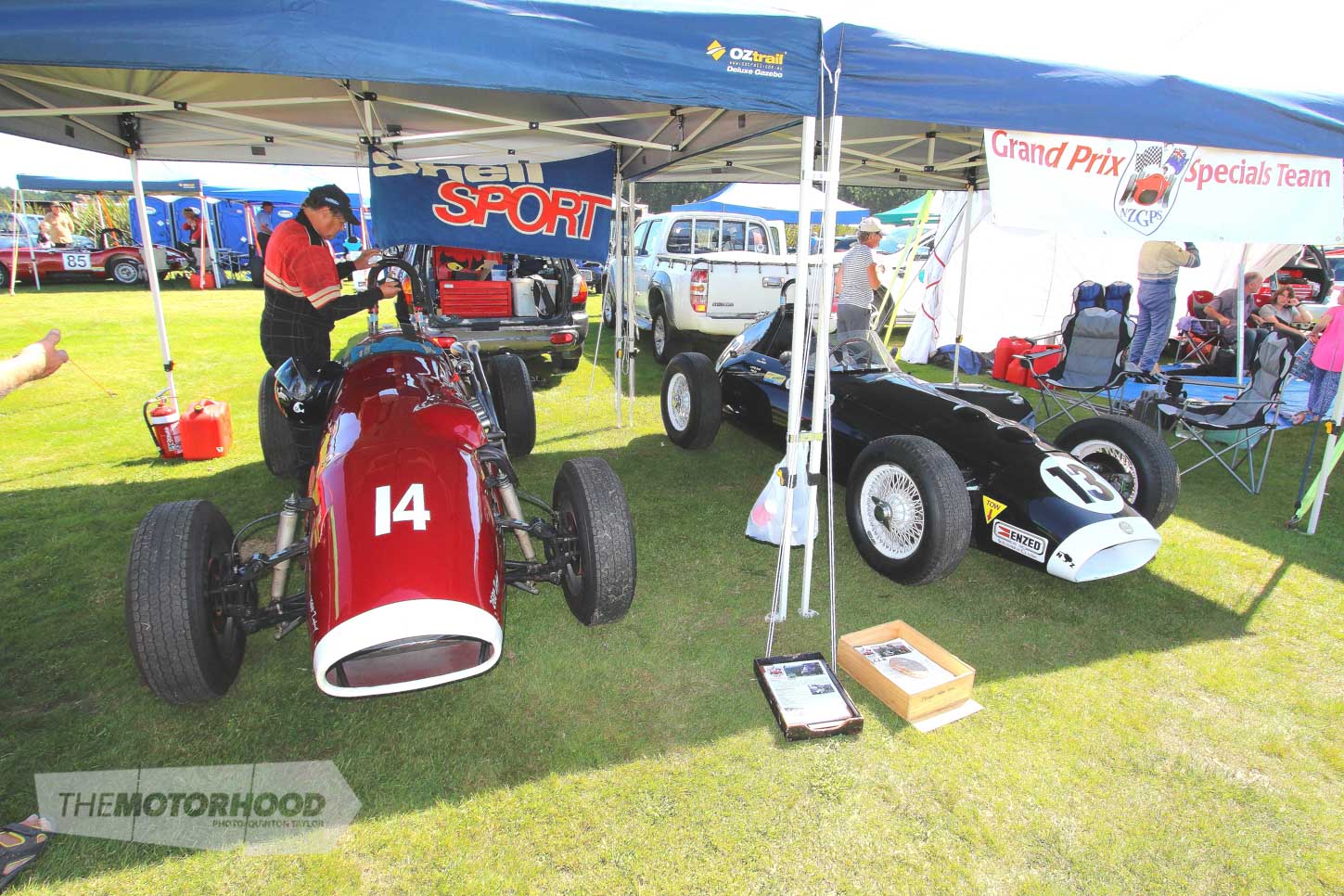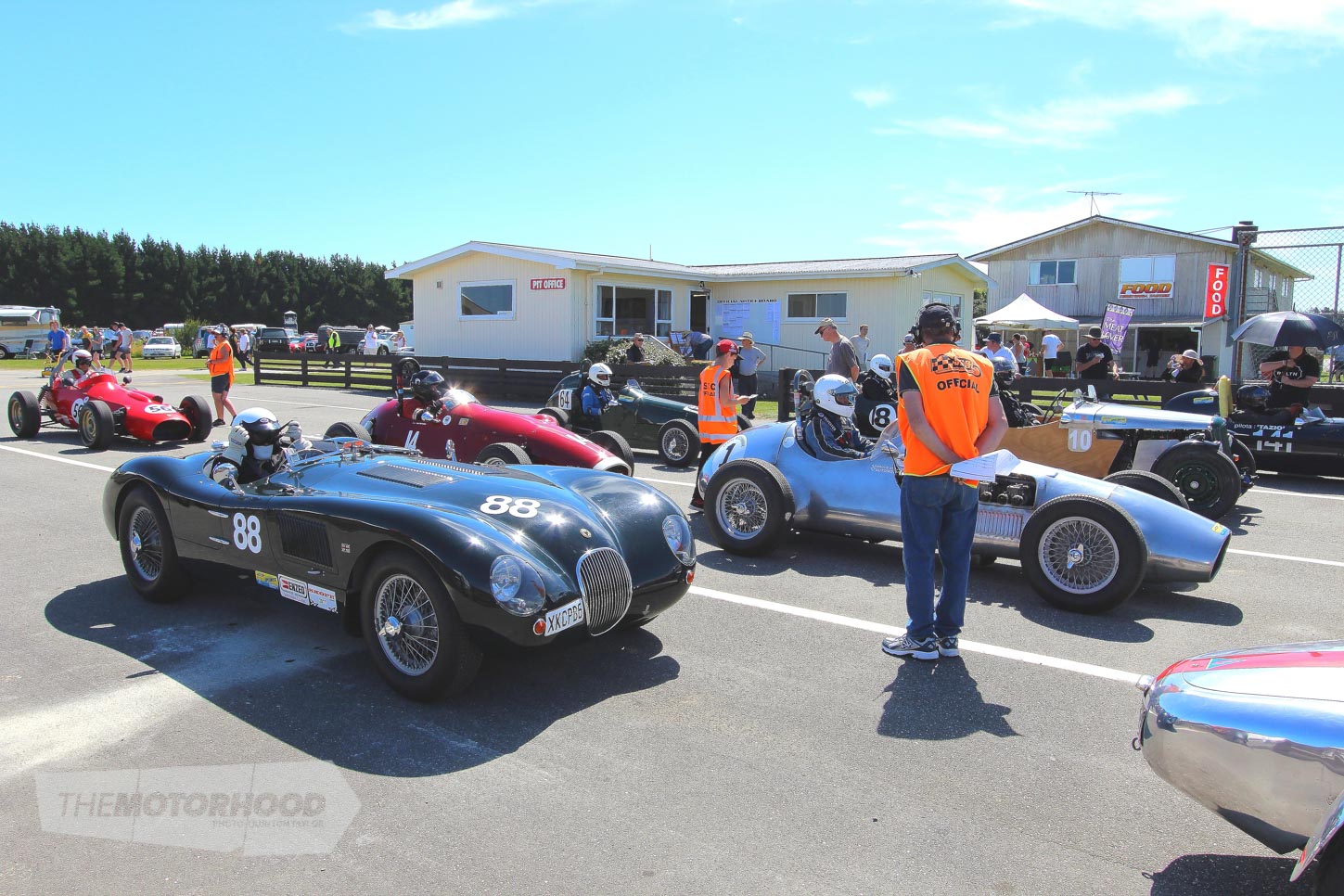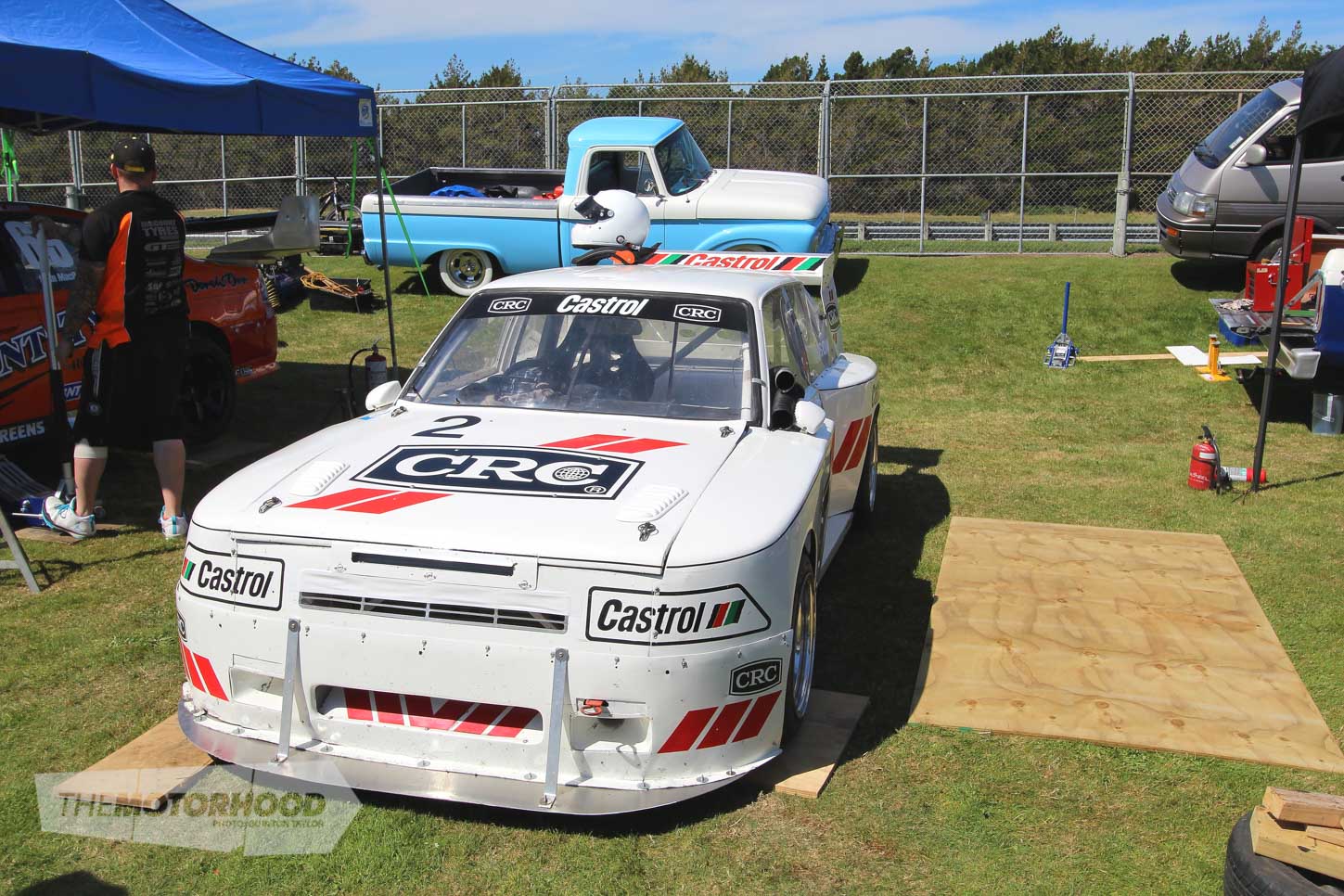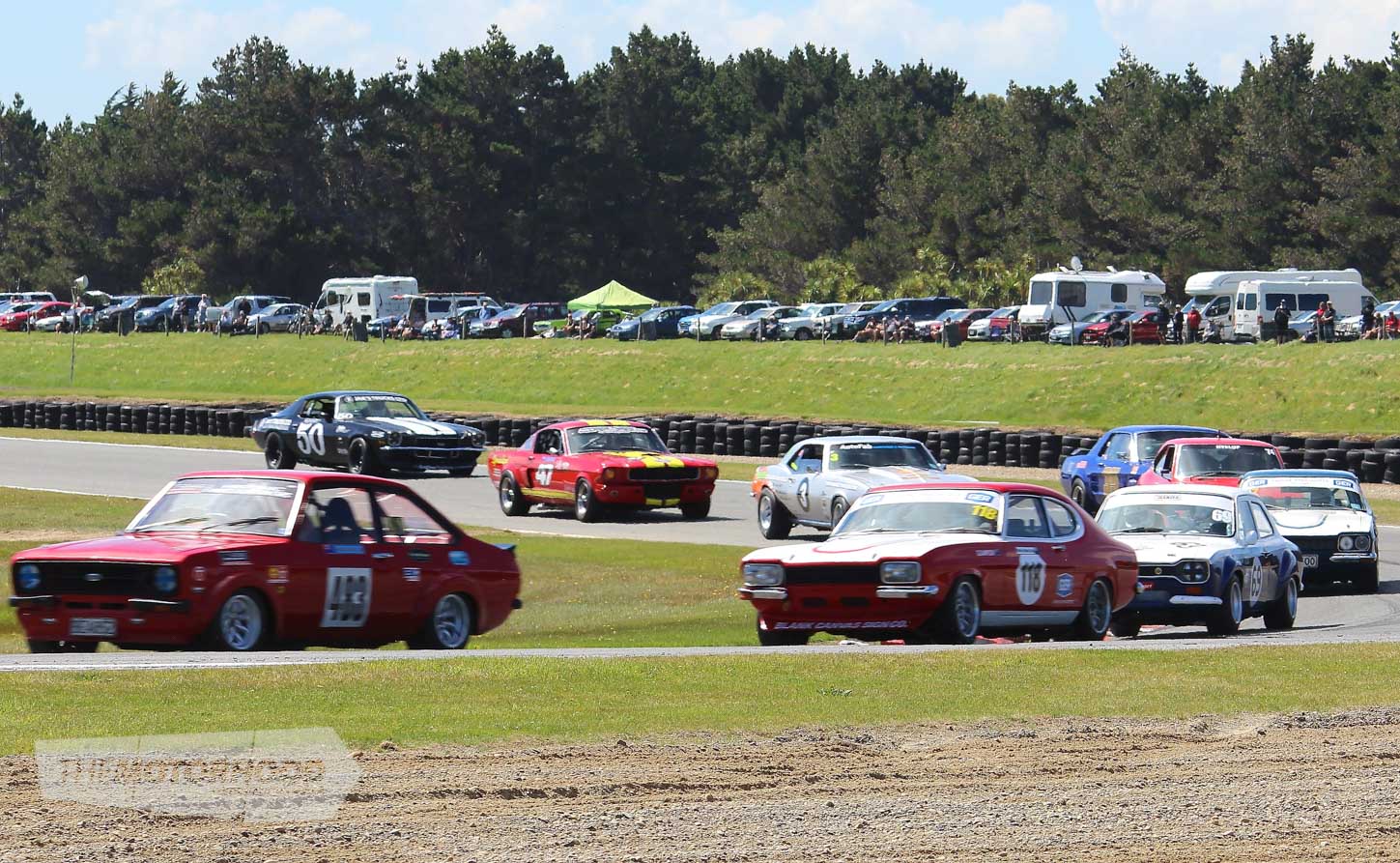With 2017 being the 25th anniversary of Classic Speedfests, the Southland Sports Car Club will be very pleased after another memorable Evolution Motorsport–sponsored classic event, held over February 17–19. The club also celebrated 60 years of Teretonga Park Motor Race Circuit as the southern-most FIA-approved circuit in the world.
The ‘Cars are the Stars’ was a theme very evident in not just numbers and variety of cars, but also the level of presentation of cars, complemented by an ability for spectators to mingle and chat with drivers and their cars in the laid-back atmosphere. In the lunch break, spectators were entertained by the wail of a Ferrari 412TB Formula 1 race car.

This year’s celebrations were boosted by the large contingent of the Formula Junior Diamond Jubilee Tour of South Africa, Europe, Australia, and New Zealand. With all the cars under one marquee, it made for a fascinating time capsule of this class as it would have been back in the day.
There was nothing laid-back about the racing as spectators were treated to a weekend of close, full-on motor-racing with large fields and the occasional lap record getting smashed. It’s interesting to note that the outright lap record set in in 1998 by Greg Murphy in a Formula Holden still stands at 0.51.208s.
Here’s just some of the action that occurred over the event:
Formula Junior Diamond Jubilee Tour

Formula Junior was conceived as an inexpensive stepping stone to Formula 1, using mainstream running gear in two classes of engines of less than 1000cc and 360kg or 1100cc and 400kg.
The formula ran from 1958–1963, and the 2017 tour celebrates this increasingly popular international historic category. The category and the jubilee tour attracted a large contingent of cars and drivers from around the world.
In class one, Anthony Olissoff of Auckland, driving an Emeryson Elfin Mk1, took the honours in the first race from Jac Nellemann of Denmark in a Alfa Dane Mk3. In the second race, Jac came back to switch the result around.
These two battled through the weekend with Nellemann the winner first up on Sunday, and Olissoff winning the final on Sunday.
In class two, Martin Bullock of Western Australia in his Lotus was just too good and took honours in all four races. Auckland’s Noel Woodford must have been influenced by a 10-second penalty in the first race for jumping the start as he set a new lap record for the class in his Gemini Mk3A.
Originally from Gore, Grant Clearwater at one time was with the Mitsubishi WRC team and now lives in Kerikeri. He appeared this year in a Cooper T59 Formula Junior instead of his usual Capella II.
Historic Muscle Cars

As expected from this category in its first outing at a Classic Speedfest at Teretonga, it produced some great racing. Glenn Allingham of Auckland, in his 6.6-litre Chevrolet Camaro, battled all weekend with Invercargill’s Colin Dawson in his 6.0-litre Chevrolet Camaro for two wins each, with a lap record going to Dawson on Saturday.
In one incident, Nigel MacDonald was chasing the leaders in the immaculate ex–Red Dawson Shelby Mustang Trans Am, and he drew gasps as he skilfully got the big car back on the track at Castrol corner, albeit a little dusty after its excursion.
A surprise of the class was Craig Horn of Te Awamutu in his rapid Holden Torana who, in the reverse grid race, made it tough for the bigger cars to catch up.
Historic Touring Cars

There was a big field of some 25 cars in this category, and Gianfranco Brancatelli of Brazil was supreme in the Ford Sierra RS500, showing that the former Formula 1 driver had not lost his touch winning all four races. Just like the close battles of the past, it was the BMW E30 M3 of Stephen Grellett from Dunedin, placing second in all four races.
Classic Saloon Cars

Local racer Brendan Mason had the Chevrolet Camaro flying for two wins in the Classic Saloon’s over-two-litre category, but he didn’t have it all his own way. Threats came from the very quick Ford Capri of Tony Mann of Dunedin and the huge Dodge Challenger of Duane Ingley of Queenstown, for a win each in the other two races.
In the up-to-two-litre category, Dean Sutherland powered his Toyota Starlet to wins in the first and last race. A great effort by Howard Wood in the BMW 2002Ti had him across the line for first in the handicap race.
On Sunday morning, Stephen Hand of Christchurch, in his Morris Cooper S, took the win after Ewan MacPherson of Invercargill, was penalized for jumping the start in his Ford Anglia.
Formula Libre

There was a real mix of some great cars in this category with the edgy-sounding Reynard 92H of Mosgiel’s Gary Cooper taking three wins. Damon Leitch’s Raven struck mechanical problems, which proved to be difficult to solve, while his brother, Brendon, made it onto the back of the grid for the final race and a well-driven second place.The fourth win went to John Williams of Christchurch in his Crossle FF2000.
Sports Cars

There was a good number of entries in this class, which has struggled for some years. Guy Stewart of Christchurch, in his Porsche 911 IROC, won the first race. Jason Crosbie of Invercargill sorted this out with a win in all three other races in his Beck Special — a fitting tribute to its builder, the late Graeme Beck.
Back again for the 60th anniversary, and there for the very first race at Teretonga in 1957, was Doug MacDonald of Motueka in his Alfa Romeo 750 Competizone. Doug had the Alfa at Teretonga for the club’s 50th celebration as well. At 85 years of age, Doug showed he could still foot it with some great driving and said he was thrilled to be there and still racing.
Vintage Racing Cars

A real slice of New Zealand motorsport history, this category reflects on the days when Kiwi builders put together some very competitive cars. Out front, the racing was no less entertaining with David Owen of Christchurch in his C-Type Jaguar driving the doors off it to try and beat Paul Coghill of Dunedin in his Jaguar Special. Closely following these two was the ever-present threat of Paul Coory in the very-quick Chevrolet CAE Sprintcar. Coory thoroughly entertained the crowds with his antics at the steering wheel as he fought to keep the big car on track through the corners. In the end it was an initial win to Owen, then three to Coghill.
Clubman Saloons

Andrew Cundall of Invercargill, in his Toyota Levin, scored enough winning points to take out the Clubman series at the Classic Speedfest weekend. Pace and close racing was expected, and it was an all-Southern effort with Liam MacDonald of Invcarcargill, in his Ford Falcon, taking out the first race after Cundall was hit with a 30-second penalty. LeRoy Stevenson of Queenstown was second in the ex-Rodger Freeth Toyota Starlet, and in the 0–1300cc category, Todd Blackmun of Invercargill, in a Star Car, set a new lap record for the class.





































